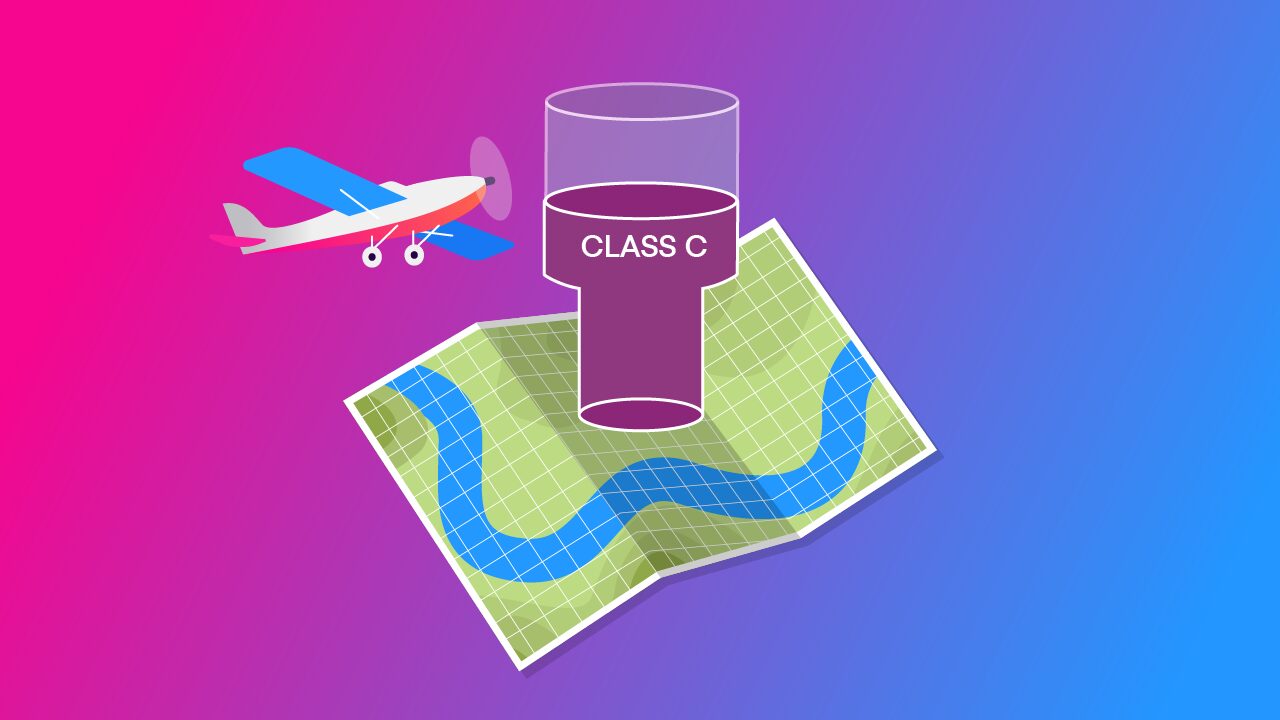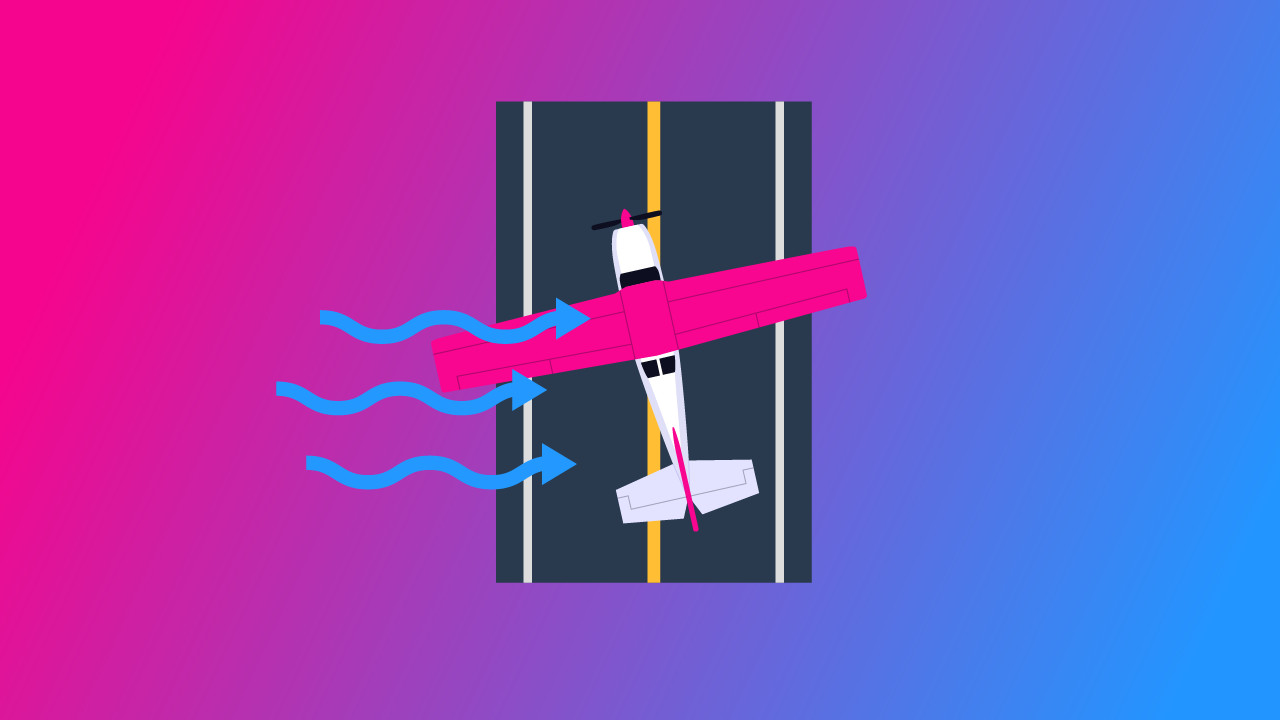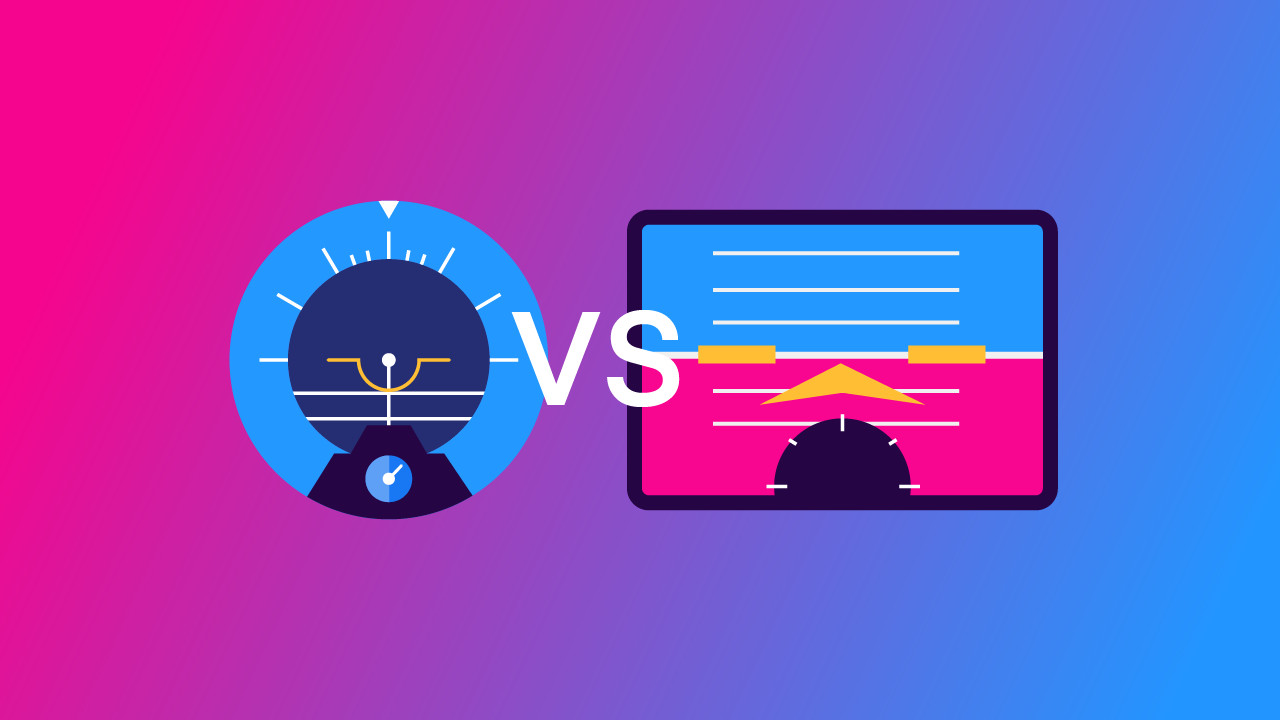Have you ever looked at a busy airport and wondered what keeps everything running so smoothly? It’s the airspace system—and Class C airspace that keeps both IFR and VFR aircraft safe.
Class C airspace is important for traffic separation between aircraft while flying. But before you can enter it, there are many important rules and concepts that as a pilot you must understand.
In this article, we’ll explore all the ins and outs of Class C airspace. You’ll learn about its size, how to enter it, what equipment you need, and all the other important details you need to know.
Key Takeaways
- Airports that fall under Class C designation handle general aviation and airline traffic.
- Aircraft need to have a two-way radio, transponder with Mode C, and Automatic Dependent Surveillance-Broadcast (ADS-B) Out equipment.
- Before entering Class C airspace, pilots must establish two-way radio communication with Air Traffic Control (ATC).
- ATC offers IFR and VFR aircraft separation services in Class C.
Class C airports’ speed limits require aircraft within 4 Nautical Miles (NM) of the primary airport and below 2500 feet to maintain an Indicated Airspeed (IAS) of 200 knots or less.
Introduction to Class C Airspace
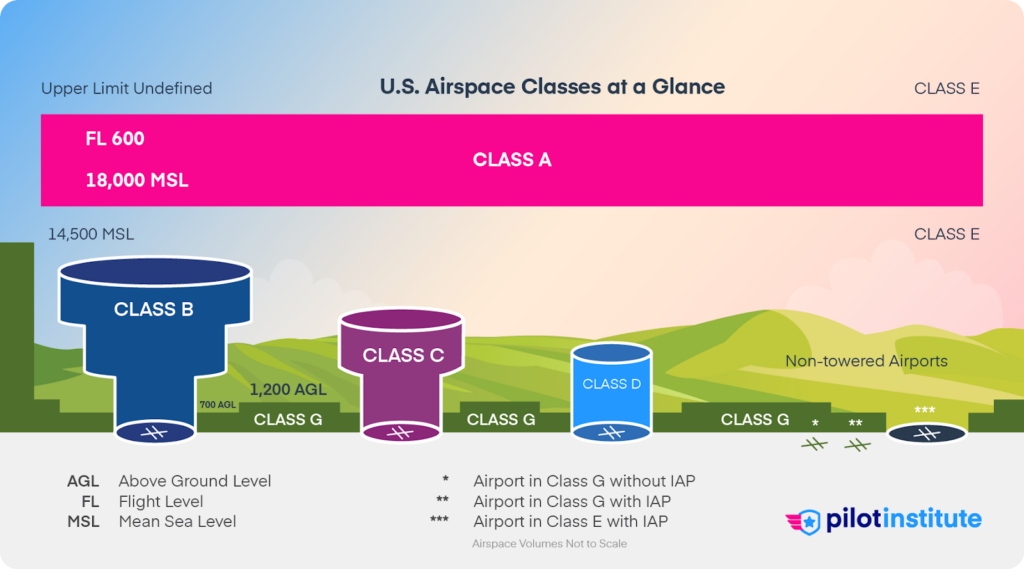
As a pilot, you must understand the different categories of airspace, such as controlled airspace (Class A, B, C, D, and E) and uncontrolled airspace (Class G), for safe and lawful flight operations. Class C airspace is essential for controlling general aviation and airline traffic for medium-sized airports.
Class C airspace has its own set of procedures and is depicted in a magenta color on a sectional chart. The purpose of Class C is to improve safety in the vicinity of airports that experience moderate to heavy traffic.
Its main objective remains to offer ATC separation services between IFR and VFR aircraft, while providing traffic advisories and safety alerts to VFR aircraft for other VFR traffic.
Class C Airspace Dimensions

Pilots frequently characterize the unique shape of Class C airspace as an upside-down wedding cake. This configuration has two primary parts: an inner core and an outer ring. The inner core typically extends from the surface to 4,000 feet above the airport elevation (charted in MSL) and has a 5 NM radius.
The outer ring, or shelf area, typically has a 10 NM radius and extends from 1,200 feet to 4,000 feet above the airport elevation (charted in MSL). The area’s topography, nearby obstructions, or proximity to other airspace can influence the shape and size of the airspace.
For instance, the Class C airspace surrounding Colorado Springs Airport (COS) has irregular boundaries because of the close proximity to mountainous terrain. The Class C airspace helps aircraft safely takeoff and descend into the airport.
Let’s take a look at some examples of Class C airports:
- John Wayne Airport (SNA) in Santa Ana, California
- Buffalo Niagara International Airport (BUF) in Buffalo, New York
- Austin-Bergstrom International Airport (AUS) in Austin, Texas
Pilots should always refer to the most recent aeronautical charts or digital flight planning tools, such as Garmin Pilot or ForeFlight, to confirm the exact boundaries of Class C airspace for their intended route. Maintaining awareness of airspace boundaries helps with the planning and carrying out of successful flights.
Entry Procedures for Pilots in Class C Airspace
Entering Class C airspace requires both careful planning and strict adherence to communication protocols. The cornerstone of these procedures is establishing two-way radio communication with Air Traffic Control (ATC) before crossing into the airspace.
When approaching Class C airspace:
- Tune to the appropriate ATC frequency for the area, found in the Chart Supplement (formerly the Airport/Facility Directory) or on sectional charts. Pilots are encouraged to initiate contact with the controlling ATC facility when within 20 nautical miles of the airport. This is a procedural ‘Outer Area’ that is not technically part of the Class C airspace, but where early communication helps ATC with sequencing and traffic advisories.
- Make an initial call providing:
- Your aircraft type and tail number.
- Your current position (relative to a landmark, navigational aid, or radial).
- Your altitude.
- Your intentions (landing, transitioning through the airspace).
- Do not enter Class C airspace until ATC responds to your transmission with your callsign. A reply that includes your callsign, even if they say ‘stand by’, means two-way communication has been established, and you are allowed to enter, unless the controller specifically instructs you to remain outside the airspace.
- Maintain 200 knots or less when within 4 nautical miles of the primary airport and below 2,500 feet AGL (Above Ground Level).
After establishing communication:
- Follow ATC instructions precisely. Controllers may give specific headings, altitudes, or sequencing instructions to maintain traffic separation.
- Advise ATC immediately if you cannot comply with a clearance and request an alternative.
Even though ATC provides separation services for IFR and participating VFR aircraft in Class C, pilots are still responsible for maintaining visual separation through see-and-avoid practices. Always stay vigilant and report any traffic conflicts or safety issues.
Class C Airspace Requirements

The Federal Aviation Administration (FAA) has set rules requiring pilots to have certain qualifications and equipment to enter Class C airspace and operate within it.
Pilot Certification: There is no specific certification required. However, Student Pilots can fly in Class C airspace only after receiving training and an endorsement from their Certified Flight Instructor (CFI).
Required Equipment:
- Two-way radio to establish contact.
- Transponder with Mode C to report altitude.
- Automatic Dependent Surveillance-Broadcast (ADS-B) Out equipment.
Flight Plan and Clearance: Before entering Class C airspace, IFR aircraft must file a flight plan and receive an ATC clearance. While VFR flights do not require a flight plan, pilots must establish two-way radio communication with ATC prior to entry.
Note: VFR pilots can enter Class C airspace only if the weather meets certain minimum visibility and cloud clearance rules. The visibility must be at least 3 statute miles with a cloud clearance of 1000 feet above, 500 below, and 2000 horizontal. Pilots and CFIs refer to this as the 3 Cessna 152s rule.
In some cases, when airfield conditions fall below minimums pilots may request a special VFR clearance, provided they can stay clear of the clouds and have at least 1 statute mile of visibility.
Minimum Radio Equipment Required for Class C Airspace
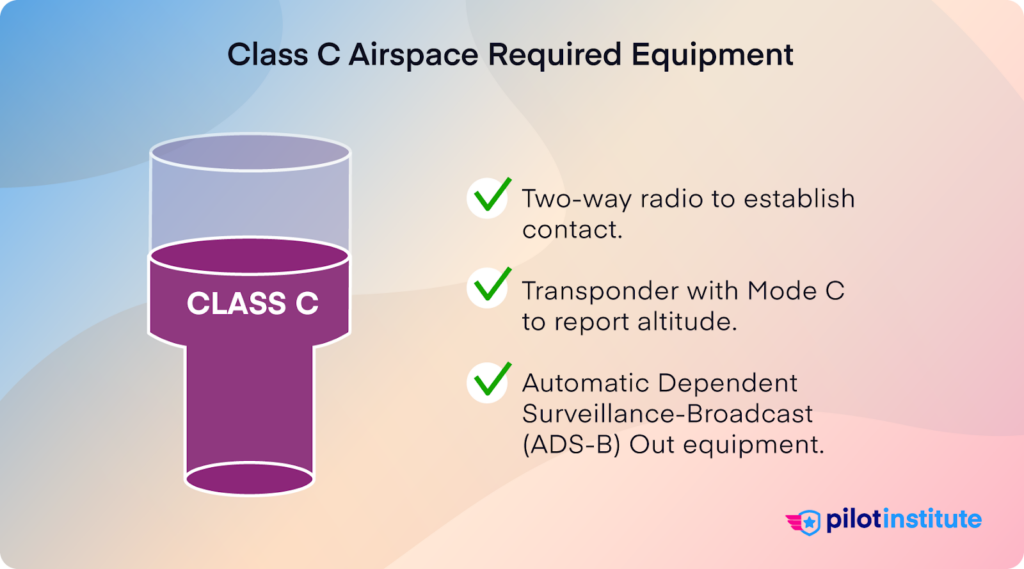
When operating in Class C airspace, keeping in contact with ATC is important. Pilots need to stay alert to react quickly to ATC calls and alert the controller if any equipment onboard malfunctions.
Let’s look more closely at the necessary radio equipment required to enter Class C airspace:
Two-Way Radio: This lets pilots talk to ATC and get important instructions. All pilots must establish two-way radio communication with ATC before entering any Class C airspace. Consider carrying a backup handheld radio if the main radios fail.
Transponder Mode C: A transponder with mode C improves situational awareness for controllers and other aircraft by sending a unique code and altitude data to ATC radar.
ADS-B Out: Aircraft operating in Class C airspace need to have ADS-B Out technology as of January 1, 2020. This system broadcasts precise position and velocity data to increase the general safety of the airspace.
Operating in Class C Airspace
Pilots can take advantage of ATC separation services after entering Class C airspace. Controllers provide separation services for IFR aircraft from other IFR aircraft, and between IFR and VFR aircraft. For VFR-to-VFR traffic, ATC provides mandatory traffic advisories and safety alerts, but pilots retain the ultimate responsibility for collision avoidance through see-and-avoid practices.
To operate in Class C airspace, the FAA has set speed limitations to improve traffic flow and safety:
- Under 2500 feet AGL and within 4 NM of the main airport, the aircraft must maintain 200 knots or less.
- Additionally, the general speed restriction of 250 knots or less applies to all aircraft operating below 10,000 feet MSL.
Tips to avoid violations in Class C airspace:
- Evaluate the charts and airport/facility directories before flying.
- Retain situational awareness while tracking your location with a GPS or other navigational aids.
- Pay close attention to the instructions provided by the ATC and accurately read the clearances back.
- If unsure, ask ATC for clarification or vectors around the airspace.
Conclusion
With all the info on Class C airspace, you’re ready. Get in your aircraft and explore those amazing blue skies!
Just remember to focus on having clear communications and following all instructions ATC gives you. Rules and regulations are not meant to restrict you, they are there to keep you and everyone else safe.
You can read our article Airspace Classes Explained for an overview of the different airspaces.
Happy flying!
